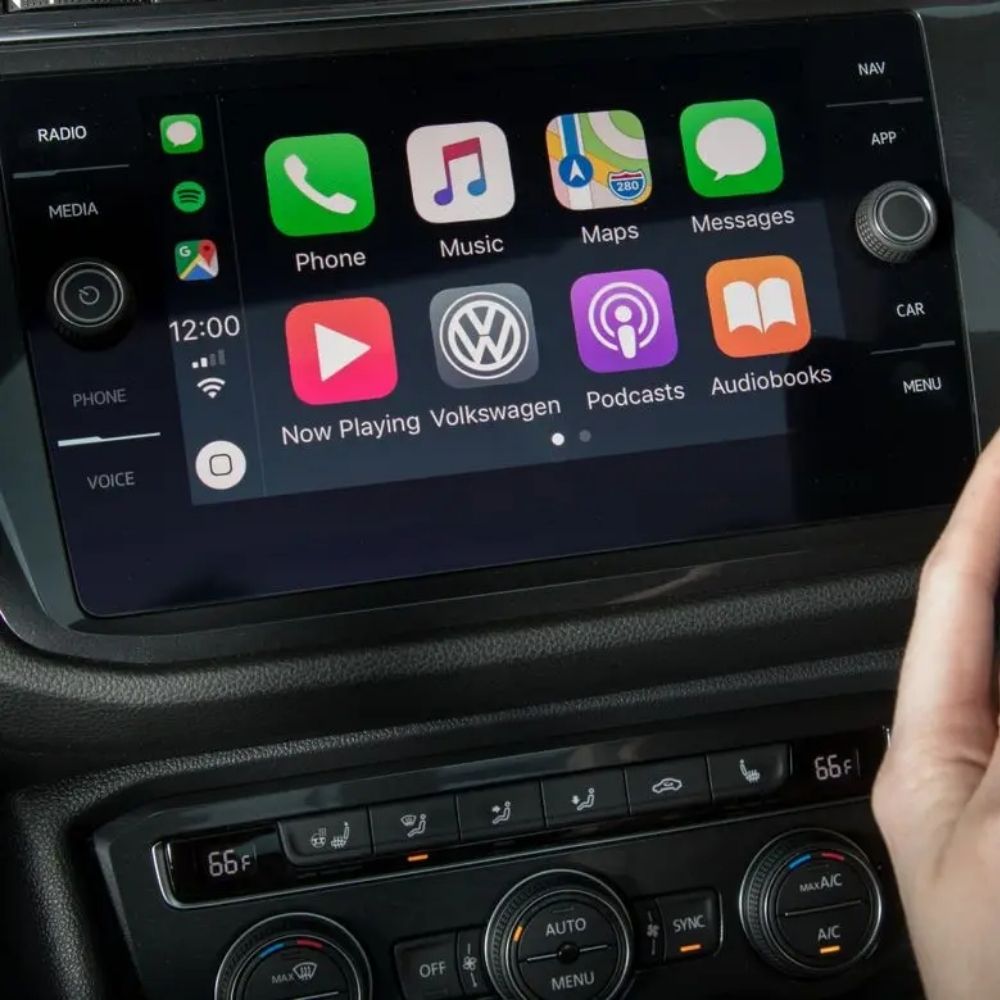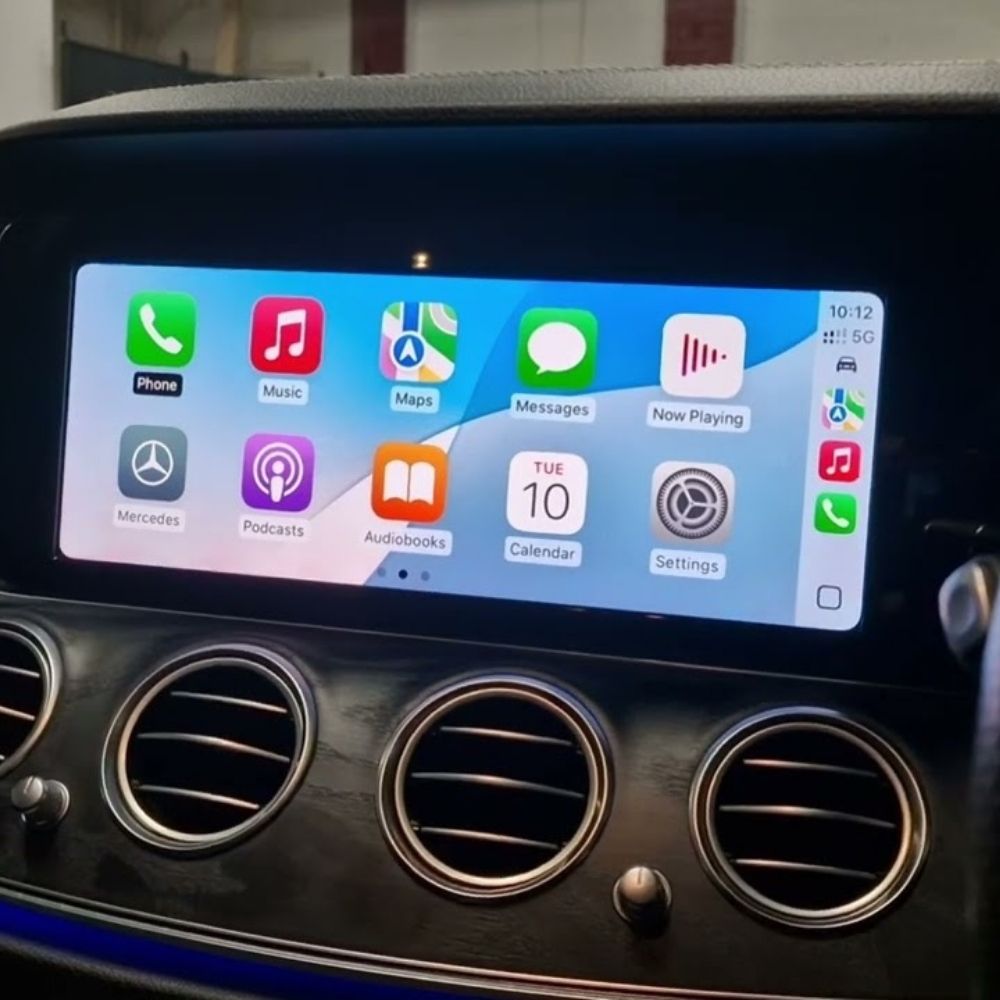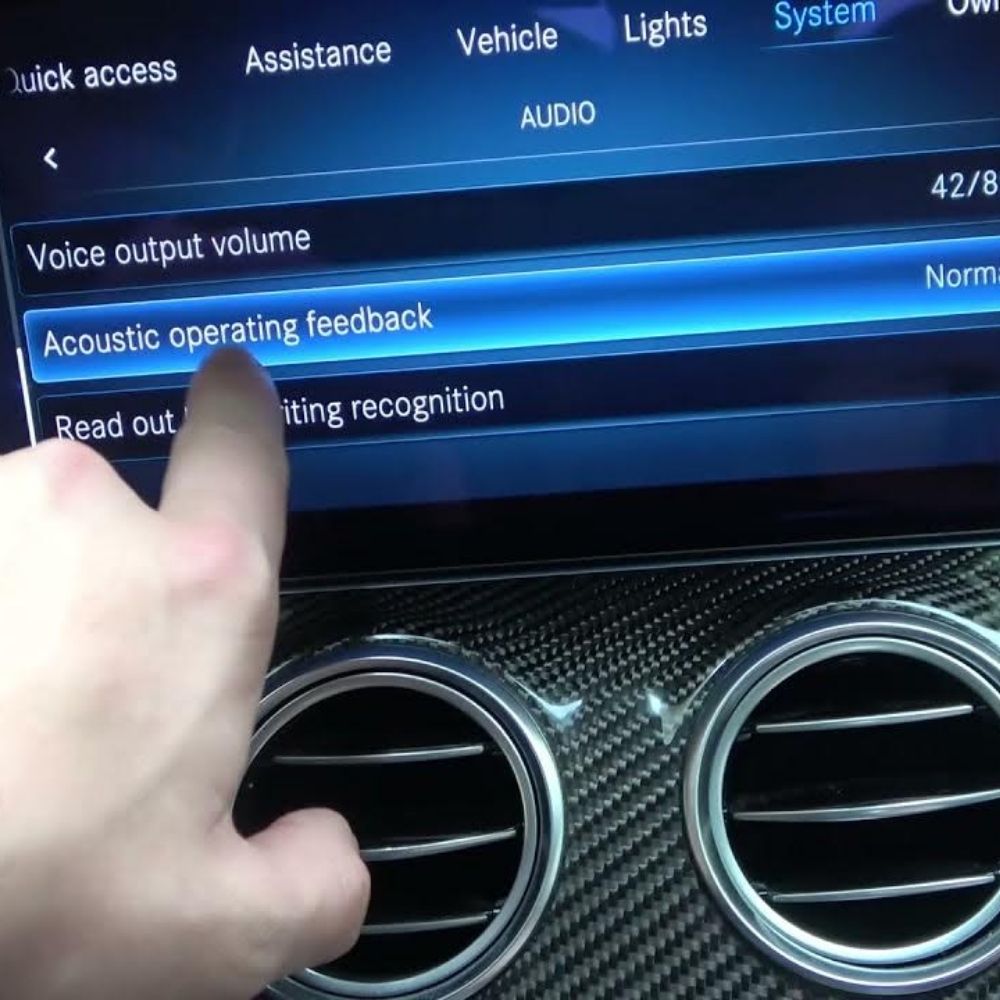
What Does Audi Code P12A2 Indicate and How To Fix?
Contents
- 1. What Is the Audi P12A2 Code and What Does It Mean?
- 1.1 Understanding the Fuel Rail High-Pressure Sensor
- 1.2 Common Symptoms Associated with P12A2
- 1.3 Severity of the P12A2 Code
- 2. What Are the Common Causes of Audi P12A2 Code?
- 3. How to Diagnose the Audi P12A2 Code?
- 3.1 Initial Inspection
- 3.2 Scan for Diagnostic Trouble Codes (DTCs)
- 3.3 Check the Fuel Pressure
- 3.4 Sensor Circuit Testing
- 3.5 Inspect the Fuel Pump and Filter
- 3.6 Component Testing
- 3.7 Utilizing Scan Tools
- 4. Step-by-Step Guide to Fix Audi P12A2 Code
- 4.1 Gather Necessary Tools and Materials
- 4.2 Replace the Fuel Rail Pressure Sensor
- 4.3 Repair Wiring Issues
- 4.4 Clear the Diagnostic Trouble Codes
- 4.5 Test Drive the Vehicle
- 4.6 When to Seek Professional Help
- 5. How Does a Faulty Fuel Rail Pressure Sensor Affect Engine Performance?
- 6. What Are the Other Codes That Might Appear With P12A2?
- 7. How to Prevent the P12A2 Code From Recurring?
- 8. How to Use a Multimeter to Test the Fuel Rail Pressure Sensor?
- 8.1 Gather Information
- 8.2 Voltage Test
- 8.3 Ground Test
- 8.4 Signal Wire Test
- 8.5 Resistance Test
- 9. What Role Does the ECM Play in Managing Fuel Pressure?
- 10. How Can AutoExplain.com Help With P12A2 and Other Audi Issues?
- Frequently Asked Questions (FAQ)
- Q1: What does Audi code P12A2 mean?
- Q2: What are the common symptoms of a P12A2 code?
- Q3: Can I drive my car with a P12A2 code?
- Q4: How do I diagnose the P12A2 code?
- Q5: What tools are needed to fix a P12A2 code?
- Q6: What is the role of the fuel rail pressure sensor?
- Q7: Can a bad fuel pump cause the P12A2 code?
- Q8: How can AutoExplain.com help with the P12A2 code?
- Q9: What other codes might appear with the P12A2?
- Q10: How do I prevent the P12A2 code from recurring?
Audi Code P12a2 refers to a fuel rail high-pressure sensor malfunction, leading to drivability problems and potentially limp mode. AutoExplain.com provides expert remote support, guiding technicians through diagnostics, component checks, and module programming for efficient repairs. Contact our experts via WhatsApp at +1(936)2896695 or email at [email protected] for assistance with Audi fuel system issues, electrical repairs, and module adaptations.
1. What Is the Audi P12A2 Code and What Does It Mean?
The Audi P12A2 code indicates a problem with the fuel rail high-pressure sensor circuit, specifically that the signal is too high. This sensor monitors the fuel pressure in the fuel rail, providing critical data to the Engine Control Module (ECM) for proper fuel delivery.
1.1 Understanding the Fuel Rail High-Pressure Sensor
The fuel rail pressure sensor is a vital component in modern fuel injection systems. It measures the pressure of fuel within the fuel rail and sends this data to the ECM. The ECM then uses this information to regulate the fuel pump and adjust the fuel injectors, ensuring optimal combustion and engine performance. A malfunctioning sensor can disrupt this process, leading to various performance issues.
1.2 Common Symptoms Associated with P12A2
Several symptoms can indicate a P12A2 fault:
- Engine Hesitation: The engine might hesitate or stumble during acceleration due to incorrect fuel delivery.
- Poor Fuel Economy: Inaccurate fuel pressure readings can lead to inefficient combustion, resulting in reduced fuel economy.
- Rough Idling: The engine might idle roughly, vibrate excessively, or stall due to an imbalance in the air-fuel mixture.
- Difficulty Starting: In some cases, the vehicle might have trouble starting, especially in cold conditions.
- Check Engine Light: The most obvious sign is the illumination of the check engine light on the dashboard.
- Limp Mode: The vehicle may enter limp mode to protect the engine from damage, limiting its speed and power.
1.3 Severity of the P12A2 Code
The P12A2 code is considered moderately severe. While it might not immediately cause catastrophic engine damage, neglecting it can lead to decreased fuel efficiency, poor engine performance, and potential long-term issues with the fuel system. Addressing this issue promptly is crucial to maintaining the vehicle’s reliability and performance.
2. What Are the Common Causes of Audi P12A2 Code?
Several factors can trigger the P12A2 code in an Audi:
- Defective Fuel Rail Pressure Sensor: The sensor itself might be faulty, providing incorrect readings to the ECM.
- Wiring Issues: Damaged, corroded, or shorted wiring in the sensor circuit can disrupt the signal.
- Connector Problems: A loose or corroded connector can cause intermittent or inaccurate readings.
- Fuel Pump Issues: A failing fuel pump might not deliver the correct fuel pressure to the rail.
- Fuel Filter Clogging: A clogged fuel filter can restrict fuel flow, affecting the pressure in the rail.
- ECM Malfunction: In rare cases, the ECM itself might be faulty, misinterpreting the sensor signal.
3. How to Diagnose the Audi P12A2 Code?
Diagnosing the P12A2 code requires a systematic approach:
3.1 Initial Inspection
Begin with a visual inspection of the fuel rail pressure sensor, its wiring, and connectors. Look for any signs of damage, corrosion, or loose connections. Clean any corrosion with a wire brush and electrical contact cleaner.
3.2 Scan for Diagnostic Trouble Codes (DTCs)
Use an OBD-II scanner to read the diagnostic trouble codes stored in the ECM. Note all the codes present, as other related codes can provide valuable clues.
3.3 Check the Fuel Pressure
Use a fuel pressure gauge to verify the actual fuel pressure in the fuel rail. Compare this reading with the value reported by the fuel rail pressure sensor using a scan tool. If there is a significant discrepancy, it indicates a sensor issue.
3.4 Sensor Circuit Testing
Use a multimeter to test the sensor’s wiring for continuity, voltage, and resistance. Consult the vehicle’s wiring diagram to identify the correct pins and expected values.
3.5 Inspect the Fuel Pump and Filter
Check the fuel pump’s performance by measuring its output pressure and flow rate. Inspect the fuel filter for clogs or restrictions. Replace the filter if necessary.
3.6 Component Testing
If the wiring and fuel pressure are within specifications, test the fuel rail pressure sensor itself. This can involve using a specialized sensor tester or substituting a known good sensor to see if the code clears.
3.7 Utilizing Scan Tools
Advanced scan tools can provide real-time data from the fuel rail pressure sensor, allowing you to monitor its performance under different engine conditions. This can help identify intermittent faults or subtle variations in the sensor’s readings.
4. Step-by-Step Guide to Fix Audi P12A2 Code
Follow these steps to repair the Audi P12A2 code:
4.1 Gather Necessary Tools and Materials
Before starting, gather the necessary tools and materials:
- OBD-II scanner
- Multimeter
- Fuel pressure gauge
- Wiring diagram for your specific Audi model
- New fuel rail pressure sensor (if needed)
- Wire stripper, crimper, and connectors (if repairing wiring)
- Socket set and wrenches
- Electrical contact cleaner
4.2 Replace the Fuel Rail Pressure Sensor
If the sensor is identified as faulty, replace it with a new one. Disconnect the negative battery terminal before starting to prevent electrical shorts.
- Locate the Sensor: Find the fuel rail pressure sensor on the fuel rail. It is usually held in place by a bolt or clip.
- Disconnect the Electrical Connector: Carefully disconnect the electrical connector from the sensor.
- Remove the Old Sensor: Remove the bolt or clip securing the sensor and gently pull it out.
- Install the New Sensor: Install the new sensor, ensuring it is properly seated and secured.
- Reconnect the Electrical Connector: Reconnect the electrical connector to the sensor.
4.3 Repair Wiring Issues
If the wiring is damaged, repair it by splicing in new wires or replacing the entire harness section.
- Identify Damaged Wires: Locate any damaged, corroded, or shorted wires in the sensor circuit.
- Cut and Strip Wires: Cut out the damaged section of the wire and strip the ends of the remaining wires.
- Splice in New Wires: Use wire connectors or solder to splice in new wires of the same gauge and length.
- Insulate Connections: Wrap the connections with electrical tape or use heat shrink tubing to insulate them.
4.4 Clear the Diagnostic Trouble Codes
After replacing the sensor or repairing the wiring, use an OBD-II scanner to clear the diagnostic trouble codes from the ECM.
- Connect the Scanner: Plug the OBD-II scanner into the diagnostic port.
- Select Clear Codes: Follow the scanner’s instructions to clear the stored diagnostic trouble codes.
- Verify the Repair: Start the engine and check if the P12A2 code returns.
4.5 Test Drive the Vehicle
Take the vehicle for a test drive to ensure the issue is resolved and the engine is performing correctly. Monitor the fuel pressure and other engine parameters with a scan tool to verify the repair.
4.6 When to Seek Professional Help
If you are not comfortable performing these repairs yourself, or if the P12A2 code persists after attempting the above steps, it is best to seek professional help from a qualified mechanic or dealership. AutoExplain.com offers remote diagnostic and programming services to assist technicians with complex issues. Contact us via WhatsApp at +1(936)2896695 or email at [email protected] for expert assistance.
5. How Does a Faulty Fuel Rail Pressure Sensor Affect Engine Performance?
A faulty fuel rail pressure sensor can significantly affect engine performance in several ways:
- Incorrect Fuel Delivery: The sensor provides critical data to the ECM, which controls the fuel injectors. Inaccurate readings can lead to over-fueling or under-fueling, affecting combustion efficiency.
- Reduced Power and Acceleration: The engine might experience a loss of power and reduced acceleration due to incorrect air-fuel mixture.
- Increased Emissions: Inefficient combustion can result in increased emissions of harmful pollutants, such as hydrocarbons, carbon monoxide, and nitrogen oxides.
- Catalytic Converter Damage: Prolonged over-fueling can lead to raw fuel entering the exhaust system, potentially damaging the catalytic converter.
- Engine Damage: In severe cases, incorrect fuel delivery can cause engine knocking, pre-ignition, and other forms of engine damage.
- Compromised Fuel Efficiency: The car will experience decreased gas mileage, costing more at the pump and increasing trips to the gas station.
6. What Are the Other Codes That Might Appear With P12A2?
Several other codes might appear along with P12A2, providing additional insights into the underlying issue:
- P0087: Fuel Rail/System Pressure Too Low
- P0088: Fuel Rail/System Pressure Too High
- P0191: Fuel Rail Pressure Sensor Circuit Range/Performance
- P0192: Fuel Rail Pressure Sensor Circuit Low Input
- P0193: Fuel Rail Pressure Sensor Circuit High Input
- P0646: A/C Clutch Relay Control Circuit Low
- P2293: Fuel Pressure Regulator 2 Performance
- P2294: Fuel Pressure Regulator 2 Control Circuit
These codes can indicate related issues with the fuel pump, fuel pressure regulator, or other components in the fuel system. Addressing these codes along with P12A2 can help ensure a comprehensive and effective repair.
7. How to Prevent the P12A2 Code From Recurring?
Preventing the P12A2 code from recurring involves regular maintenance and addressing potential issues early on:
- Regular Fuel Filter Replacement: Replace the fuel filter according to the manufacturer’s recommended maintenance schedule. A clean fuel filter ensures proper fuel flow and prevents strain on the fuel pump and pressure sensor.
- Maintain Fuel System Cleanliness: Use high-quality fuel and consider using fuel system cleaners periodically to remove deposits and contaminants.
- Inspect Wiring Regularly: Periodically inspect the fuel rail pressure sensor wiring and connectors for any signs of damage, corrosion, or loose connections.
- Address Fuel Pump Issues Promptly: If you notice any symptoms of a failing fuel pump, such as difficulty starting or loss of power, address the issue promptly.
- Professional Diagnostics: If you experience any recurring issues with the fuel system, seek professional diagnostics to identify and address the underlying cause.
- Quality Parts: When replacing any fuel system components, use high-quality parts from reputable manufacturers to ensure reliability and performance.
8. How to Use a Multimeter to Test the Fuel Rail Pressure Sensor?
Testing the fuel rail pressure sensor with a multimeter involves checking the voltage, resistance, and continuity of the sensor circuit:
8.1 Gather Information
Consult the vehicle’s wiring diagram to identify the correct pins for the sensor’s power, ground, and signal wires.
8.2 Voltage Test
- Disconnect the Sensor: Disconnect the electrical connector from the fuel rail pressure sensor.
- Set Multimeter to DC Voltage: Set the multimeter to DC voltage mode.
- Measure Voltage: Connect the multimeter’s positive lead to the power wire and the negative lead to the ground wire.
- Check Voltage: Turn the ignition on (without starting the engine) and check the voltage reading. It should be close to the battery voltage (typically 12V).
8.3 Ground Test
- Set Multimeter to Continuity: Set the multimeter to continuity mode.
- Check Continuity: Connect one lead to the ground wire and the other lead to a known good ground point on the vehicle’s chassis.
- Verify Continuity: The multimeter should indicate continuity (low resistance).
8.4 Signal Wire Test
- Reconnect the Sensor: Reconnect the electrical connector to the fuel rail pressure sensor.
- Backprobe the Signal Wire: Use a backprobe to access the signal wire without damaging the connector.
- Start the Engine: Start the engine and let it idle.
- Measure Voltage: Use the multimeter to measure the voltage on the signal wire. The voltage should vary depending on the fuel pressure.
- Compare Readings: Compare the voltage reading with the expected values specified in the vehicle’s service manual.
8.5 Resistance Test
- Disconnect the Sensor: Disconnect the electrical connector from the fuel rail pressure sensor.
- Set Multimeter to Resistance: Set the multimeter to resistance mode.
- Measure Resistance: Connect the multimeter leads to the appropriate pins on the sensor.
- Check Resistance: Compare the resistance reading with the expected values specified in the vehicle’s service manual.
9. What Role Does the ECM Play in Managing Fuel Pressure?
The Engine Control Module (ECM) plays a central role in managing fuel pressure by monitoring the fuel rail pressure sensor and controlling the fuel pump and fuel injectors:
- Monitoring Fuel Pressure: The ECM receives data from the fuel rail pressure sensor, providing real-time information about the fuel pressure in the fuel rail.
- Controlling Fuel Pump: The ECM controls the fuel pump’s speed and output based on the fuel pressure readings. It adjusts the fuel pump’s operation to maintain the desired fuel pressure in the fuel rail.
- Adjusting Fuel Injectors: The ECM controls the fuel injectors’ opening duration and timing to deliver the correct amount of fuel to each cylinder. It uses the fuel pressure data to compensate for any variations in fuel pressure and ensure optimal combustion.
- Diagnostic Functions: The ECM monitors the fuel system for any faults or abnormalities. If it detects a problem, such as an incorrect fuel pressure reading, it sets a diagnostic trouble code and illuminates the check engine light.
- Adaptive Learning: The ECM uses adaptive learning algorithms to adjust the fuel delivery parameters over time, compensating for wear and tear on the fuel system components.
10. How Can AutoExplain.com Help With P12A2 and Other Audi Issues?
AutoExplain.com offers expert remote diagnostic and programming services to assist technicians with complex Audi issues, including the P12A2 code:
- Remote Diagnostics: Our experienced technicians can remotely diagnose your vehicle’s issues using advanced diagnostic tools and software. We can help you identify the root cause of the P12A2 code and provide step-by-step instructions for repair.
- Module Programming: We offer remote module programming services for Audi vehicles, including ECM, TCM, BCM, and ABS modules. If you need to reprogram a module after replacing a faulty component, we can help you do it remotely.
- Wiring Diagrams and Technical Support: We provide access to comprehensive wiring diagrams and technical information for Audi vehicles. Our technicians can help you troubleshoot wiring issues and provide guidance on performing electrical repairs.
- Expert Advice: Our team of experienced technicians is available to answer your questions and provide expert advice on any Audi-related issues. We can help you troubleshoot complex problems and find the best solution for your vehicle.
- Cost-Effective Solutions: Our remote services are often more cost-effective than taking your vehicle to a dealership or independent repair shop. We can help you save time and money by providing remote assistance and guidance.
Experiencing persistent trouble with Audi Code P12A2 or other complex automotive issues? Don’t waste time and resources on guesswork. Contact AutoExplain.com for rapid, expert remote technical support. Reach out via WhatsApp at +1(936)2896695 or email us at [email protected]. Our team of skilled professionals is ready to provide you with efficient, accurate diagnostics and solutions.
Frequently Asked Questions (FAQ)
Q1: What does Audi code P12A2 mean?
Audi code P12A2 indicates a fault with the fuel rail high-pressure sensor circuit, specifically a signal that is too high, which means the sensor is reporting a fuel pressure higher than expected.
Q2: What are the common symptoms of a P12A2 code?
Common symptoms include engine hesitation, poor fuel economy, rough idling, difficulty starting, the check engine light being illuminated, and potentially limp mode activation.
Q3: Can I drive my car with a P12A2 code?
Driving is not recommended for long distances as it can lead to poor engine performance and possible engine damage. The vehicle may enter limp mode, restricting speed and power.
Q4: How do I diagnose the P12A2 code?
Diagnosis involves a visual inspection of the sensor and its wiring, scanning for diagnostic trouble codes, checking fuel pressure with a gauge, and testing the sensor’s circuit with a multimeter.
Q5: What tools are needed to fix a P12A2 code?
Required tools include an OBD-II scanner, multimeter, fuel pressure gauge, wiring diagram, new fuel rail pressure sensor (if needed), wire stripper, crimper, and connectors for wiring repair.
Q6: What is the role of the fuel rail pressure sensor?
The fuel rail pressure sensor measures the pressure of fuel within the fuel rail and sends this data to the ECM, which regulates the fuel pump and adjusts the fuel injectors for optimal combustion.
Q7: Can a bad fuel pump cause the P12A2 code?
Yes, a failing fuel pump can cause the P12A2 code if it cannot deliver the correct fuel pressure to the fuel rail, leading to inaccurate readings from the pressure sensor.
Q8: How can AutoExplain.com help with the P12A2 code?
AutoExplain.com offers remote diagnostics, module programming, wiring diagrams, and expert advice to assist technicians in identifying and repairing the root cause of the P12A2 code efficiently.
Q9: What other codes might appear with the P12A2?
Other codes include P0087 (Fuel Rail/System Pressure Too Low), P0088 (Fuel Rail/System Pressure Too High), and P0191-P0193 related to the fuel rail pressure sensor circuit range or performance.
Q10: How do I prevent the P12A2 code from recurring?
Prevention includes regular fuel filter replacement, maintaining fuel system cleanliness, inspecting wiring regularly, promptly addressing fuel pump issues, seeking professional diagnostics, and using quality parts.
Contact Information
- Address: 1500 N Grant ST Sten Denver, CO 80203
- WhatsApp: +1(936)2896695
- Email: [email protected]
- Website: AutoExplain.com


How to activate Apple Carplay on Mercedes?

How to Activate Mercedes Key Left in Car Warning with DTS Monaco

How to Change Sound Volume Door Opening & Closing for Mercedes-Benz






